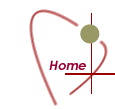Diagnosing
the Cause of Syncope Include the Following Procedures:
1.
History and Physical Examination
2.
Electrocardiogram(see figure94),which may lead to immediate treatment
of underlying condition(e.g.the implantation of a pacemaker in
complete heart block,see definition of atrioventricular disturbances
and figures 84-92),or can help plan further testing.
3.
If initial assessment leads to a diagnosis(i.e.vasovagal syncope,situational
syncope,drug-induced syncope,complete heartblock) further tests
may be planned(e.g.determining the cause of postural hypotension)
and therapy started.
4.
See table for a list of clues to specific diagnoses.
Reference:Kapoor,W.N.,The
New England Journal of Medicine,v343,n25,12/21/00,pp1856-186
The
electrocardiogram may show
1.
signs of ischemia(abnormal shifts of the ST segment of the EKG
after the QRS complex inscription in a downward direction below
the baseline compared to the ST segment prior to the onset of
the QRS,see figure 94 for normal EKG)
2.
a long QT interval(see figure 94 for normal EKG),siginifying an
aquired or inherited repolarization disorder(see definition of
types of arrhythmias as to causes),which can predispose to ventricular
tachycardia(see figures 6,7,8,9a,9b)with syncope ,possibly treatable
with radiofrequency catheter ablation,
Zipes,D.P.MD,Clinical Application of the Electrocardiogram,Journal
of the American College of Cardiology ,v.36.n6,2000,pp1746-8
3.
a bundle branch block(suggesting a dilated or hypertrophic type
of cardiomyopathy(see figures 39f,39g,40a,40b 4of )or even an
arrhythmogenic right ventricular or muscular
dystrophy one).
Zipes,D.P.MD,Clinical Application of the Electrocardiogram,Journal
of the American College of Cardiology ,v.36.n6,2000,pp1746-8
4. Also, there are
two types of ventricular tachycardias, which occur in apparently
normally structured hearts
and include
a.
those originating in the right ventricular outflow tract that
have a LBBB-inferior axis morphology,
b.
those coming from the left ventricular septum that have a RBBB
and a left axis deviation contour.
c.
Both are relatively easy eliminated with radiofrequency catheter
ablation(see figure11).
Zipes,D.P.MD,Clinical Application of the Electrocardiogram,Journal
of the American College of Cardiology ,v.36.n6,2000,pp1746-8
Specific
tests like an echocardiogram or cardiac catheterization for aortic
stenosis(see definition of aortic stenosis,and figures 46a-c,47)may
be necessary.
5.
If the above tests are unrevealing,the patient has unexplained
syncope .
6.
In patients with structural heart disease ,the chief concern is
arrhythmias (see definition of arrhythmias; see figures 1, 2,
3, 5a,7,14,16 )
7.
Echocardiography( see definition),
8.
Stress testing(see definition),
9.
24 hours Holter electrocardiographic(EKG) monitoring(see definition)with
symptoms compared to the time of the arrhythmia discovered,
10.
Cardiac consultation may be in order,as well as cardiac electrophysiology,
if the Holter EKG monitoring is unrevealing.
11.
If the electrophysiologic studies are negative,then continuous
loop monitoring for bradyarrhythmia(see figure 16)is recommended,
since the sensitivity for these arrhyhmias are low for electrophysiologic
tests.
Reference:Kapoor,W.N.,The
New England Journal of Medicine,v343,n25,12/21/00,pp1856-1862
12.
Continuous loop monitors are used for long term monitoring lasting
weeks to months.The patient or an observer can activate the monitor
after symptoms occur, thereby freezing in its memory the readings
from the previous 2 to 5 minutes and the subsequent 60 seconds.
13.
Patients with recurrent syncope and negative electrophysiology
studies should be evaluated for neurally mediated syndrome(i.e.carotid
sinus syndrome,psychiatric illnesses),including tilt testing,
which will provoke vasovagal syncope in susceptible persons.
14.
An electroencephalogram may be useful if a seizure is suspected
,or there is a history o f convulsions.
15.
Hospitalization for rapid identification of the cause of syncope
is advised if potential adverse consequences are high if evaluation
is delayed, and for treatment (i.e. aortic stenosis,HCM figures39f,39g,40a,4
0b 40f,63,64).
Reference:Kapoor,W.N.,The
New England Journal of Medicine,v343,n25,12/21/00,pp1856-1862
16.
Patients with structural heart disease,ischemia(see figure70),
abnormal EKG,and arrhythmias , adverse drug reactions and severe
orthostasis should be hospitalized for diagnostic evaluation
TREATMENT
1.
In neurally mediated syncope atenolol has been helpful as has
paroxetine.
2.
Permanent pacemakers providing rapid pacing below a predetermined
drop in heart rate in patients with severe symptoms and bradycardia
on tilt tests showed a reduction in rate of syncope(see figure12).
Reference:Kapoor,W.N.,The
New England Journal of Medicine,v343,n25,12/21/00,pp1856-1862
3.
Volume replacement in orthostatic hypotension should be included
if there is intravascular depletion and any drugs responsible
reduced in dose.
4.
In autonomic failure(see definition of autonomic nervous system
and figure 28) increase in salt and fluid intake, use of waist
high stockings, abdominal binders, and fludrocortisone are beneficial
as well as midodrine.

